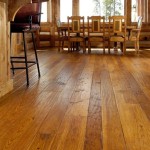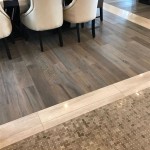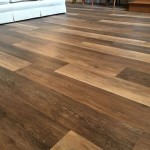Underlay for Vinyl Flooring is a thin material that is placed beneath the vinyl flooring to provide cushioning and insulation. It is an important part of the installation process and can help to reduce noise, provide a more comfortable feel, and even increase the lifespan of the vinyl flooring. Underlay for Vinyl Flooring is available in a variety of materials, including foam, rubber, cork, felt, and even recycled rubber or plastic. Each type of underlay has its own unique features and benefits, so it is important to consider the needs of your space when selecting the right underlay for your vinyl flooring.
Types of Vinyl Flooring Underlay
Foam Underlay: Foam underlay is one of the most popular materials used for vinyl flooring underlay. It is lightweight, easy to install, and provides excellent cushioning. It is also cost-effective and is available in different densities to suit your needs. Foam underlay is great for sound insulation and can help to reduce noise transfer between rooms.
Rubber Underlay: Rubber underlay is another popular option for vinyl flooring underlay. It is more durable than foam and is also great for noise insulation. It is also waterproof, making it ideal for bathrooms and kitchens. Rubber underlay is slightly more expensive than foam and is available in different thicknesses.
Cork Underlay: Cork underlay is a natural material that is popular for vinyl flooring underlay. It is a great insulator and can help to reduce noise transfer. It is also environmentally friendly, as it is made from renewable materials. It is also a great choice for areas that are subject to water damage, as it is waterproof and resistant to mold and mildew.
Felt Underlay: Felt underlay is a soft and durable material that is great for providing cushioning and insulation. It is also available in different thicknesses and can be used in both residential and commercial applications. Felt underlay is great for sound insulation and can help to reduce noise transfer between rooms.
Recycled Rubber or Plastic Underlay: Recycled rubber or plastic underlay is a great option for vinyl flooring underlay. It is made from recycled materials, making it an environmentally friendly choice. It is also great for sound insulation and can help to reduce noise transfer. Recycled rubber or plastic underlay is also waterproof, making it ideal for bathrooms and kitchens.
Benefits of Underlay for Vinyl Flooring
- Provides cushioning and insulation
- Reduces noise transfer between rooms
- Increases the lifespan of the vinyl flooring
- Helps to reduce energy costs by providing insulation
- Protects against water damage in areas prone to moisture
- Friendly to the environment, as it is made from recycled materials
How to Install Underlay for Vinyl Flooring
Installing underlay for vinyl flooring is a relatively simple process. First, you need to prepare the floor by sweeping and vacuuming to remove any debris. Then, lay the underlay in strips and cut it to the desired size. When installing the underlay, make sure it is firmly secured to the floor with adhesive or nails. Finally, install the vinyl flooring over the top of the underlay, ensuring it is properly secured.
Conclusion
Underlay for Vinyl Flooring is an important part of the installation process, as it provides cushioning and insulation. It can also help to reduce noise transfer and increase the lifespan of the vinyl flooring. There are a variety of materials available, including foam, rubber, cork, felt, and recycled rubber or plastic. Installing underlay for vinyl flooring is a simple process that can help to make your space more comfortable and energy efficient.











![]()


Related Posts









